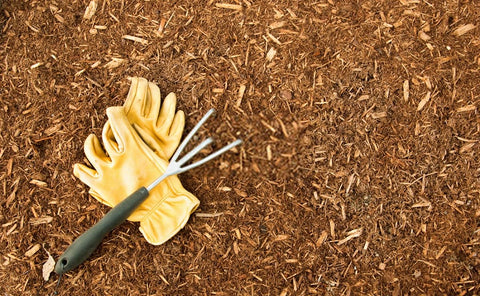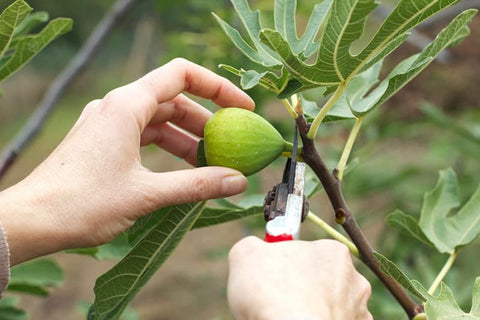Why Pruning and Trimming Matter for Your Garden
A thriving garden isn't just about planting seeds and waiting for them to grow. It's about tending to each plant with care and precision. Pruning and trimming are crucial techniques that keep your garden vibrant, healthy, and well-maintained. These tasks not only enhance the aesthetic of your plants but also boost their growth and longevity. By regularly pruning and trimming, you can avoid overgrowth, prevent diseases, and ensure that your garden flourishes year-round. Whether you’re an experienced gardener or just starting, the right approach to pruning and trimming will make all the difference in the world.The following content also has some reference value for raised garden beds.
The Benefits of Smart Pruning and Trimming
Smart pruning and trimming have a ripple effect that extends far beyond the immediate appearance of your garden. These practices promote better air circulation, reduce the risk of plant diseases, and ensure that your plants are getting the right amount of sunlight. Additionally, trimming can help control the shape and size of your plants, preventing them from overtaking their space. By removing excess growth, you're allowing your plants to direct their energy into creating strong roots and vibrant blossoms. Beyond aesthetics, these activities promote overall garden health and vitality, creating an environment where plants thrive and bloom.

How Proper Pruning Saves You Time in the Long Run
It might seem like an effort to get out there with the shears but trust that regular pruning saves you time in the long term. When you prune at the right times, you prevent overgrowth, which can lead to cumbersome maintenance tasks down the line. Neglecting your plants can result in tangled vines, overgrown branches, and plants that become unmanageable. Pruning encourages controlled growth and minimizes the need for constant, intensive care. Smart pruning helps your plants grow stronger and healthier, meaning they’re less prone to disease and require fewer interventions, ultimately freeing up your time.
The Role of Trimming in Maintaining Garden Health
Trimming is like a regular checkup for your plants. While pruning focuses on removing dead or damaged branches, trimming involves the more frequent, routine care of shaping plants and keeping them compact. Regular trimming keeps your garden looking neat and tidy, but it also plays a role in plant health. By trimming off dead or diseased leaves and stems, you prevent the spread of infection and allow the healthy parts of the plant to flourish. It's not just about appearance; it’s about creating the best possible environment for your plants to thrive.
Understanding the Basics of Pruning and Trimming
To master pruning and trimming, you need to start with the fundamentals. Pruning involves cutting away dead, damaged, or overgrown branches to promote healthy growth. Trimming, on the other hand, is a lighter touch, focusing on maintaining the shape and size of plants. Understanding the differences between these techniques and when to use them will help you make informed decisions about how to care for your garden. Knowing when to prune and when to trim ensures your plants stay in peak condition, without cutting too much or too little.
What’s the Difference Between Pruning and Trimming?
The difference is subtle but important. Pruning is generally done to improve the health and structure of a plant. It’s about removing parts that are dead, damaged, or diseased, as well as controlling the plant’s shape and size for optimal growth. Trimming, however, focuses on maintaining the aesthetic look of the plant. It’s the routine process of cutting back the edges to keep everything neat. Think of pruning as a deeper intervention for the plant’s well-being and trimming as a more superficial but equally important touch-up to keep things looking neat.
When to Prune vs. When to Trim
Knowing when to prune and when to trim is key to avoiding unnecessary damage to your plants. Prune in late winter or early spring when plants are dormant, allowing them time to heal before the growing season. Trimming, however, can be done more regularly throughout the year to maintain shape and size. It’s best to trim lightly throughout the growing season to keep your plants from becoming unruly. Always check the plant’s growth cycle and adjust your approach accordingly to avoid interfering with its natural processes.
Common Mistakes People Make with Pruning and Trimming
Even seasoned gardeners can make mistakes when it comes to pruning and trimming. Cutting too much at once is a common error. Over-pruning weakens plants and can stunt their growth. Another mistake is using dull or inappropriate tools, which can lead to jagged cuts and invite disease. Lastly, pruning at the wrong time—like during the growing season—can stress plants and interfere with their growth. By educating yourself on best practices and taking the time to approach pruning and trimming with care, you can avoid these pitfalls and keep your garden healthy.

Essential Tools for Pruning and Trimming
No task is more efficient than when you're armed with the right tools. For pruning, a sharp pair of bypass shears is essential for clean, smooth cuts that prevent plant tissue damage. Loppers are great for tackling thicker branches, allowing you to easily cut through larger growth, while a pruning saw is perfect for tackling even larger limbs that require more force. For trimming, hedge trimmers and shears provide precision, enabling you to shape plants effortlessly. Having the right equipment will not only make your job easier, faster, and more effective, but it will also provide a cleaner cut that helps your plants heal quickly, lowering the chance of infections and encouraging quicker healing.
Must-Have Tools for Effortless Pruning
Effortless pruning is all about having the right tools at your disposal. A set of bypass shears, which are cut with a scissor-like action, ensures precision and reduces damage to healthy plant tissue, preventing long-term harm. Loppers are essential for branches too thick for shears, offering more leverage and better control during the cut. Meanwhile, a pruning saw is an ideal tool for heavy-duty work, especially when dealing with overgrown trees and shrubs. A good pair of gloves and a tool sharpener should also be on hand to ensure comfort and maintain tool longevity. With these essential tools, pruning becomes a seamless task, not a chore, enabling you to achieve professional results with minimal effort.
How to Choose the Right Pruning Shears and Trimmers
Choosing the right pruning shears and trimmers depends on the size and type of plants in your garden. For small to medium branches, bypass shears are your best bet. They create smooth, precise cuts without damaging plant tissue, which is crucial for maintaining the plant’s health. If you need to trim thicker branches, opt for a pair of loppers or anvil shears, as these tools provide the necessary power for thicker, tougher growth. Electric hedge trimmers are fantastic for keeping bushes and hedges in check, especially if you're dealing with dense growth or larger areas that require frequent maintenance. Select tools based on your specific needs—whether it's cutting precision or power—this will make your work much faster and more efficient.
Timing Is Everything: When to Prune and Trim
The timing of your pruning and trimming tasks plays a crucial role in the health and longevity of your plants. Pruning at the right time of year encourages healthy new growth while trimming regularly ensures that your plants maintain their shape and size. Knowing when to carry out these tasks will help prevent unnecessary damage and allow your garden to flourish. Pruning and trimming at the wrong time can shock your plants or cause excessive stress, affecting their overall health. Here’s a breakdown of the best times for pruning and trimming to help guide your gardening efforts.
The Best Time of Year for Pruning and Trimming
The best time for pruning most plants is during their dormant period in late winter or early spring. This minimizes the risk of disturbing their natural growth cycle, helping plants recover quickly and thrive in the coming season. Trimming, however, can be done more frequently throughout the growing season to maintain shape and size without impacting overall growth. Avoid pruning in the heat of summer, as it can stress plants, especially during periods of drought or extreme temperatures. Instead, focus on lighter trimming to keep everything neat and in control, ensuring that plants stay healthy and aesthetically pleasing.
How Seasons Affect Your Pruning and Trimming Schedule
Each season presents different opportunities for pruning and trimming, and knowing how to adjust your schedule can make a significant difference. In spring, pruning encourages fresh growth and the development of new buds, making it the best time for rejuvenating plants. Summer calls for regular trimming to manage the shape of plants and control their growth, helping prevent them from becoming too unruly. Fall is a great time for final touches, preparing plants for winter, and ensuring they are healthy enough to withstand colder temperatures. Each season requires a different approach, and understanding these nuances will help you keep your garden on track and looking its best year-round.
Pruning for Different Plant Types: Trees, Shrubs, and Flowers
Different plants require different approaches when it comes to pruning. Trees are usually pruned in winter when they are dormant, minimizing stress and encouraging healthier growth in spring. Shrubs and flowers, on the other hand, benefit from a more targeted pruning schedule that aligns with their blooming cycles. Flowering plants should be pruned after they bloom to avoid cutting off potential buds, while evergreens and non-flowering shrubs may need more frequent attention. Each plant type has its own needs, so tailoring your pruning and trimming techniques is vital to keeping them healthy, thriving, and looking their best throughout the year.

Smart Techniques for Faster Pruning
Pruning doesn’t have to be a time-consuming task if you adopt efficient techniques. One technique is “cutting in bulk”—this involves removing multiple branches at once, focusing on larger cuts rather than taking small, detailed snips. This method speeds up the process, especially for plants that require heavy pruning. Another time-saving method is "crown thinning," which promotes better airflow by selectively removing branches, thus improving the overall health of the plant. By using these techniques, you can get the job done faster without sacrificing quality, saving you time and effort in maintaining your garden.
The One-Minute Trick to Keep Your Garden Looking Sharp
If you only have a minute to spare, give your garden a quick trim to keep things looking neat. Focus on removing any stray or overgrown branches, especially along the edges of your garden beds or around walkways. These little touch-ups can instantly tidy up your space and keep your garden looking sharp without spending too much time. Even a quick pass with your pruning shears can go a long way in maintaining your garden’s appearance, ensuring it looks well-kept and attractive with minimal effort.
Pruning and Trimming for Long-Term Garden Health
Pruning and trimming don’t just improve the immediate look of your garden—they’re essential for long-term plant health. Smart pruning promotes stronger roots, and better growth, and encourages the development of healthy new shoots. Regular trimming helps prevent disease and pest infestations by removing dead or damaged plant parts that could become breeding grounds for harmful organisms. By routinely removing these areas, you reduce the risk of infestations and improve the overall vitality of your plants. With proper care, your plants will not only look great but will also thrive for many seasons to come.









